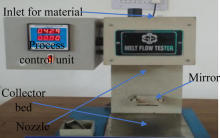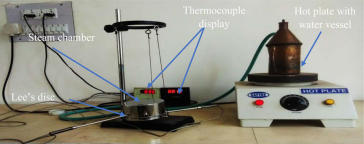 In a paper entitled “On the 3D printing of recycled ABS, PLA and HIPS thermoplastics for structural applications,” a group of researchers discusses multi-material 3D printing for structural applications. The materials they use are recycled ABS, PLA and HIPS to create composite parts. The point was to combine the materials so that the final component benefited from the respective strengths of each material.
In a paper entitled “On the 3D printing of recycled ABS, PLA and HIPS thermoplastics for structural applications,” a group of researchers discusses multi-material 3D printing for structural applications. The materials they use are recycled ABS, PLA and HIPS to create composite parts. The point was to combine the materials so that the final component benefited from the respective strengths of each material.
“ABS is amorphous in nature and having high impact resistance,” the researchers state. “Low thermal conductivity, heat resistance and toughness, bio-degradability and bio-compatibilities are the key advantages of PLA, whereas HIPS is a low strength structural polymer which have better machinability and fabrication characteristics with low cost.”
The researchers 3D printed the sample components, which had four layers of each material. Testing was then performed on the components, including MFI characterization, differential scanning calorimetric (DSC) analysis, tensile testing, Lee’s disc thermal conductivity measurement, flexural testing and pull out testing. ABS, PLA and HIPS were found, through DSC testing, to be compatible with each other, all of them having similar ranges of integral heat value.
“As the practical application requires the requirement for maximum strength with minimum elongation, HIPS was having most desired elongation and PLA was having most desired tensile strength values,” the researchers continue. “After 3D printing of multi-material component, it was observed that tensile strength and elongation values of all multi-material printed components were observed intermediate to the HIPS and ABS which shows the usefulness of present study.”
Several conclusions were made from the study, as stated by the researchers:
In tensile testing, the Young’s modulus of multi-material component (325 MPa) was observed higher at experiment number 3, than single thermoplastic (Young’s modulus of PLA 47.9 MPa, ABS of 175 MPa and for HIPS 112.5 MPa).
Pull out testing revealed the fact that elongation and strength properties of 3D printing can be controlled through multi-material printing at predicted input processing setting. It was noted that break elongation of multi-material components was observed smaller as compared to ABS and PLA. At the same time, break load and break strength has been observed greater than HIPS in case of pull out tests.
3D printing of multi-material components at predicted settings resulted in the observation that flexural strength was attained higher than HIPS (2.01 MPa) material as 2.96 MPa but lower than PLA (9.07 MPA) and ABS (7.04 MPa).
It was noted that PLA was having thermal conductivity of 0.2225 W/m.K, ABS of 0.1722W/m.K and HIPS of 0.3232W/m.K. For structural applications, it requires the thermal conductivity to be desired minimum. Multi-material printing of these materials resulted in thermal conductivity of 0.2732W/m.K (dt/dT = 0.814 K/s) which was lesser than HIPS material shows the utility of multi-material 3D printing.
Overall, the three materials were compatible with each other, and their strengths worked together to create composite components that were superior to single-material components. With the growing sophistication of 3D printers, and the greater accessibility of printers with multimaterial capabilities, it is becoming easier to 3D print composite components like these for functional applications that benefit from the best characteristics of ABS, PLA and HIPS.
Authors of the paper include Ranvijay Kumar, Rupinder Singh and Ilenia Farina.
Discuss this and other 3D printing topics at 3DPrintBoard.com or share your thoughts below.
Subscribe to Our Email Newsletter
Stay up-to-date on all the latest news from the 3D printing industry and receive information and offers from third party vendors.
You May Also Like
HILOS Realizes Footwear Designs of Ancuta Sarca with Shoe 3D Printing Platform
Designer Ancuta Sarca collaborated with HILOS Studio to unveil 3D printed shoes at London Fashion Week. Together, they created a wedge sandal that highlights Ancuta’s design prowess and HILOS’s platform-based...
HILOS Unveils On-demand 3D Printed Shoe Platform at Art Basel
At Art Basel in Miami, Portland startup HILOS Studio announced a new partnership that signals a shift in the company’s business strategy for 3D printed footwear production, likely for the...
RIP 3D Printing, Part 3: Rapid Applications
In this series, I’ve guided you through a fragmented landscape where the shift from investor funding to making money from selling components, services or machines is imminent. Traditionally, mastering 3D...
3DPOD Episode 174: 3D Printed Shoes with Elias Stahl, HILOS Founder & CEO
Elias Stahl believes that his startup, HILOS, has the potential to transform the manufacturing industry. Starting with 3D printed shoes, he aims to integrate this technology with skilled labor, additional...

































